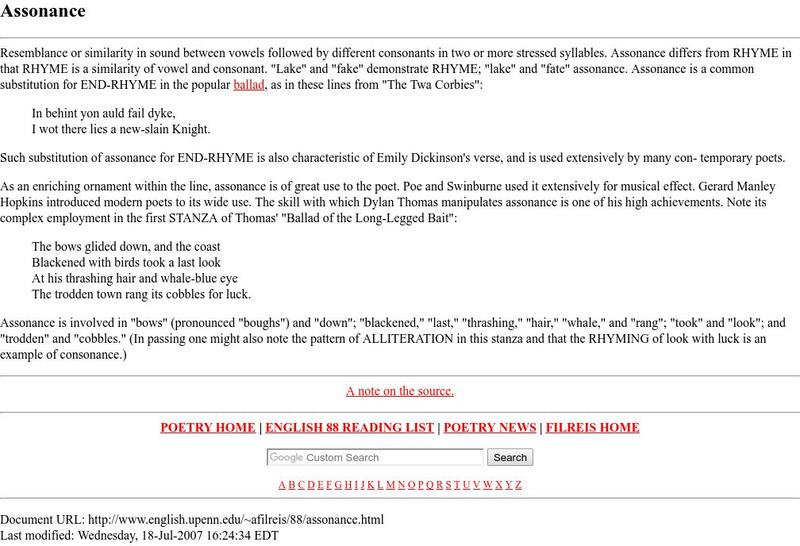Curated OER
Mc Graw Hill: Part 1 Reading: Literature: Understand Literary Allusions
Understanding literary allusions can help in your understanding of readings. Learn about literary allusions on this site.
NPR: National Public Radio
Npr: A Series of Unfortunate Literary Allusions
Can you spot the many literary allusions made in the famous "Series of Unfortunate Events" books? This article points them out and explains them.
Other
Spelling police.com: Oxymoron
Informational site that provides the definition for and examples of oxymoron. L.9-10.5a Figures of Speech
Other
Spelling police.com: Literary Devices
A simple list of literary terms. Click on each for a definition and examples.
Other
Story in Literary Fiction: Humor and Fiction
This essay discusses the effects of humor in fiction, and provides some advice to writers on how to incorporate humor in their writing.
University of Victoria (Canada)
The U Vic Writer's Guide: Literary Term: Aphorism
Provides an excellent description of the element of aphorism in writing. Content includes several examples.
University of Victoria (Canada)
The U Vic Writer's Guide: Literary Term: Epithet
This site from The UVic Writer's Guide provides a general description of the word "epithet." Content also includes a literary example.
University of Victoria (Canada)
The U Vic Writer's Guide: Literary Term: Irony
This site from The UVic Writer's Guide provides an excellent description of the literary term "irony." Content includes a focus on dramatic irony, structural irony, and verbal irony.
University of Victoria (Canada)
The U Vic Writer's Guide: General Literary Terms
The University of Victoria's Writer's Guide includes an extensive list of literary and rhetorical terms. List can be displayed alphabetically.
University of Victoria (Canada)
The U Vic Writer's Guide: Figures of Thought: Conceit
A definition of the term "conceit" as it applies to figures of speech. It further breaks it down into definitions of Petrarchan conceit and metaphysical conceit.
Other
Bedford/st. Martin's: Lit Gloss
An encyclopedia of literary terms is included on this site. Students can choose different letters of the alphabet to search for literary terms.
ReadWriteThink
Read Write Think: Alliteration in Headline Poems
In this lesson, students will learn or review the topic of "alliteration" in writing. Then each student will create a 25-word headline poem that contains at least three examples of alliteration. [Requires Adobe Reader.]
Quia
Quia: Concentration: Literary Devices
This game asks students to match literary devices (similes, metaphors, personification, slang/dialect and allusions) with their examples while remembering where they are located behind covered squares. Java is required.
TES Global
Blendspace: Rl 5.4 Figurative Language
This twelve-part learning module provides assorted references for figurative language terms. This blendspace provides reproducible charts, flash cards, a game, video tutorial lessons, and rap songs. L.9-10.5 Fig Lang/nuances
E Reading Worksheets
E Reading Worksheets: Figurative Language Examples
Along with definitions for four types of figurative language, this learning module provides numerous examples. Similes, metaphors, personification, and hyperbole are the types of figurative language featured.
Washington State University
Washington State University: Epigram/epigraph/ Epitaph/epithet
This site gives a definition of the word "epigram." It also includes a few examples of epigrams.
ClassFlow
Class Flow: Figurative Language Review
[Free Registration/Login Required] This lesson helps students understand figurative language.
Other
Wastholm Media: Aphorisms Galore
This site from Wastholm Media gives numerous examples of aphorisms. They are Organized by theme and author.
Sophia Learning
Sophia: Humor in Writing
Eight slides introducing different types of humor in writing including irony, caricature, satire, wit, blunders, hyperbole, jokes, practical jokes, and puns.
Sophia Learning
Sophia: Oxymorons
This slideshow focuses on oxymoron by defining the term, discussing its purpose, and providing examples. L.9-10.5a Figures of Speech
Sophia Learning
Sophia: Alliteration
Notes introducing and providing examples of alliteration and the two types of alliteration, consonance and assonance. Notes can be both read and listened to.
Other
Chulalongkorn University: Elements of Fiction Irony
This site contains four different definitions of irony.
Houghton Mifflin Harcourt
Holt, Rinehart and Winston: Elements of Literature: Identifying Figures of Speech [Pdf]
A graphic organizer which allows students to document and list the figures of speech they identify in a given piece of literature. These include simile, metaphor, personification, and symbol, and require examples from the text.
University of Pennsylvania
University of Pennsylvania: Assonance
This resource provides a detailed explanation of the term "assonance." Several examples provided as well as links to related sites.
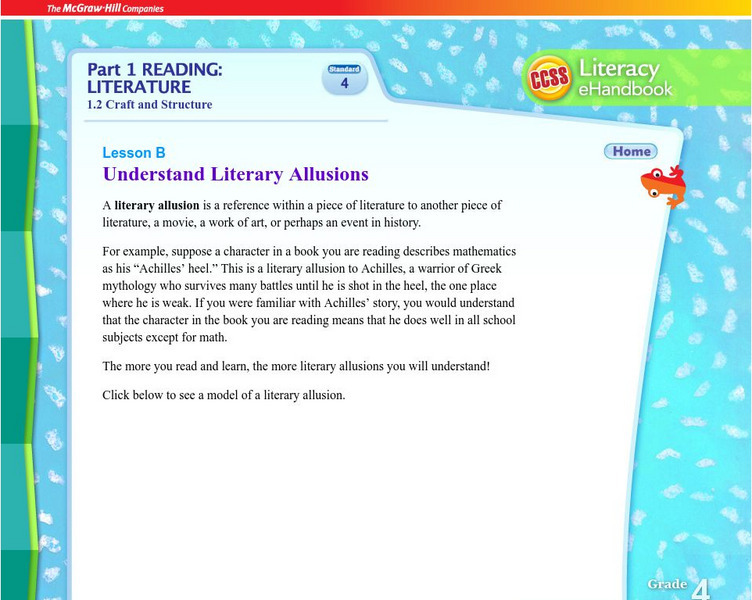


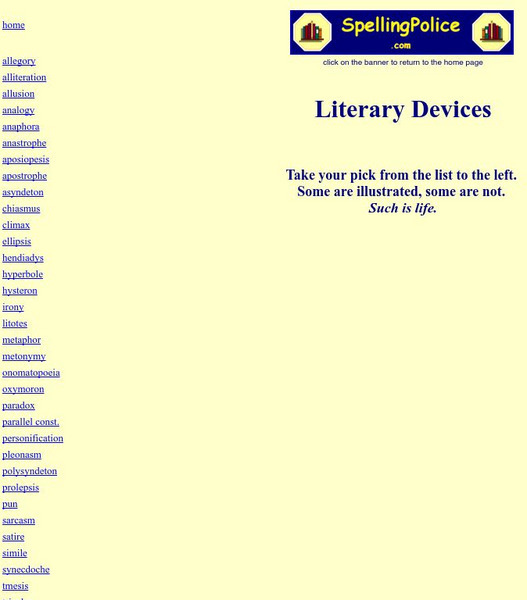





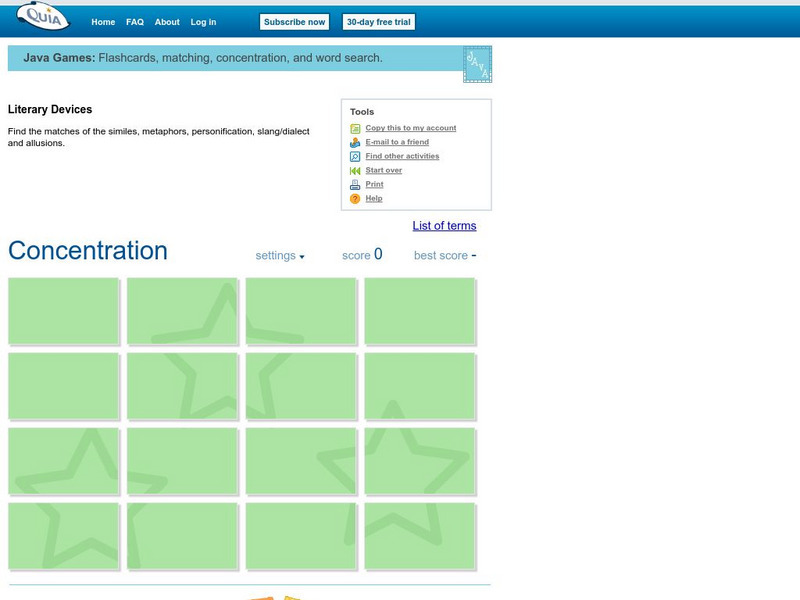
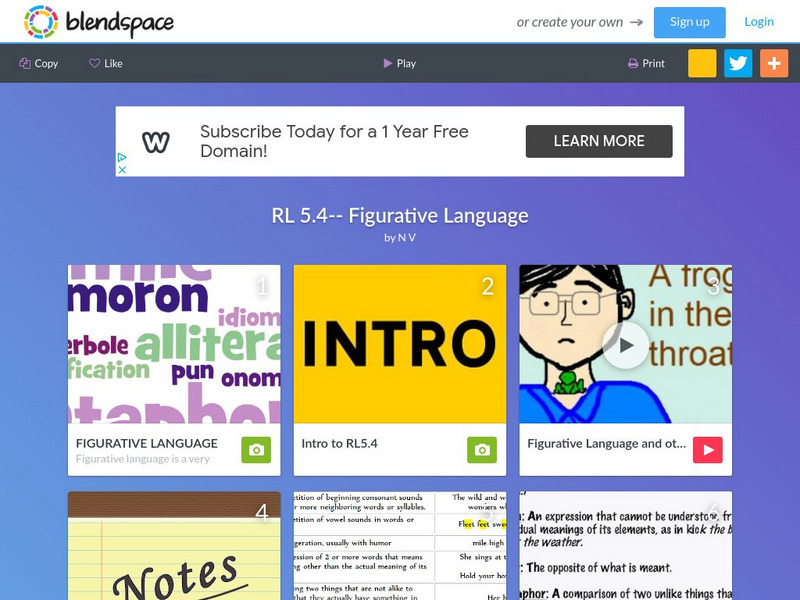



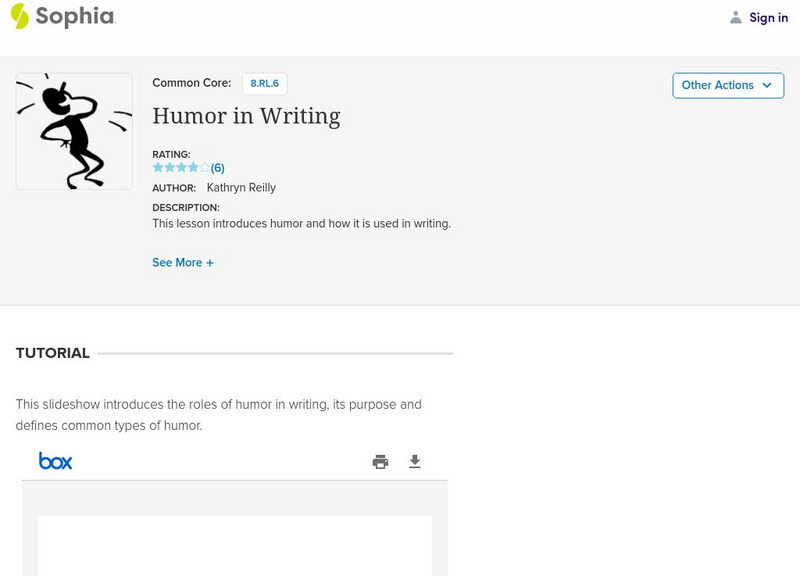

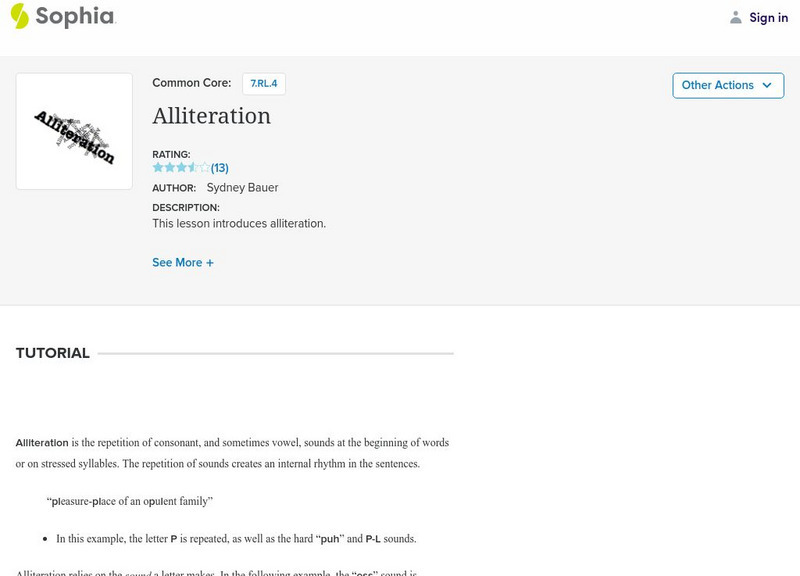
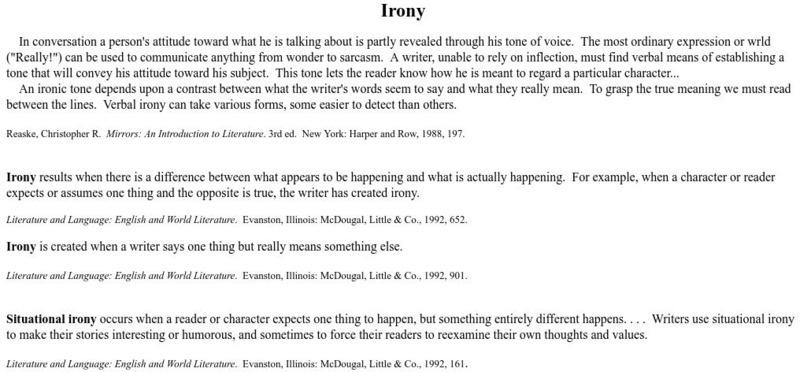
![Holt, Rinehart and Winston: Elements of Literature: Identifying Figures of Speech [Pdf] Graphic Holt, Rinehart and Winston: Elements of Literature: Identifying Figures of Speech [Pdf] Graphic](http://content.lessonplanet.com/resources/thumbnails/410154/large/bwluav9tywdpy2symdiwmduymc0yotywmi1ondh3nneuanbn.jpg?1589985628)
